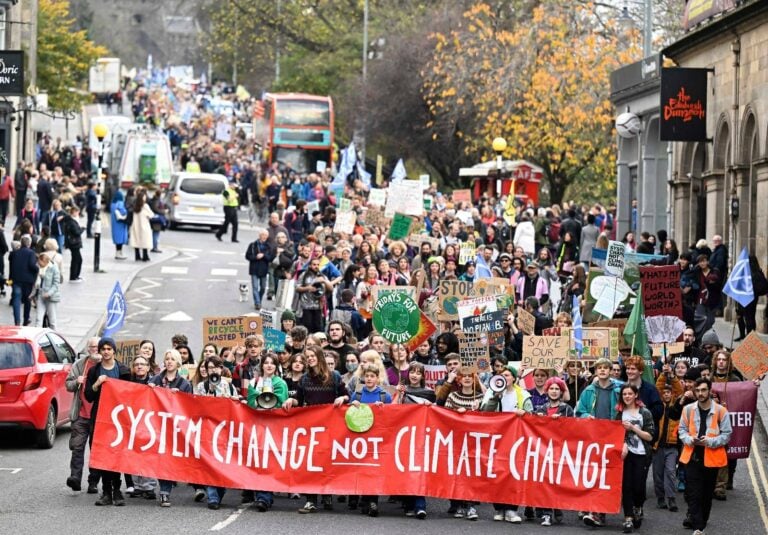
The politics of quantitative easing and the increasingly negative consequences they have on developing countries
by Myriam Vander Stichele
Quantitative easing programs were implemented by the central banks to stimulate the Western economies after the financial crisis of 2008. Central banks bought bonds with newly created money that was earmarked for circulation among the banks and financial markets. The QE programs have culminated in, among other results, rapid capital flows to developing countries due to the higher returns on investment in those countries, and the greater willingness of foreign investors to take risks. This has resulted not only in increased government debt in the form of government bonds from developing countries, but also a dramatic increase in corporate bonds issued by companies in developing countries. For example, the issuance of international bonds from the Latin American and Caribbean regions increased from US$297 billion in 2009 to US$757 billion in 2017. Some of this debt is held by institutional investors in more prosperous countries, often in the form of private pension funds that seek higher returns.
The politics of quantitative easing
A SOMO report by Rodrigo Fernandez explains how QE works, what its consequences are, how it creates serious risks for developing countries and what measures should be taken to prevent their adverse effects. The danger for developing countries has become more acute since the US Federal Reserve and the European Central Bank (ECB) have decided to discontinue their QE programs while increasing interest rates, which results in investors siphoning capital from developing economies, back to the US in particular. The lack of debt-resolution mechanisms, for both government bonds and the great number of corporate bonds, will make any looming debt crisis more difficult to manage. This might, as in the past, result in painful adjustments by the indebted countries, and saddle ordinary citizens with dramatic, long-term socio-economic and political consequences. There are a variety of measures that could be enacted to mitigate the negative effects of QE and the resulting ever-greater, more aggressive, fluctuations of cross-border capital inflows and outflows. These include: capital controls for specific capital flows, the reregulation of financial markets, third-country cross-border transaction taxes, increased risk assessment methodologies prior to the purchase of a developing country’s debt as well as the introduction of debt-restructuring clauses in corporate bond contracts.
The adverse effects of QE have already been felt by a number of developing and so-called emerging market countries, especially Turkey, South Africa, Brazil, India, Indonesia and Russia. Their currencies have already undergone dramatic depreciation, prompting a negative impact on both their economies and their citizens. For instance, Argentina’s peso, economy, debt situation and government policy have come under such intense market pressure, including the withdrawal of investors’ capital, that the Argentine government was forced to seek a US$50 billion loan from the IMF to avoid defaulting on its debt.
Debt crisis alert. End of Quantitative Easing poses grave risks for emerging economies
Another country that has suffered from the discontinuation of QE is India, whose currency reached an all-time low at the end of June 2018. Kavaljit Singh(opens in new window) , in a recent article, describes why the Indian rupee has depreciated so much and what the consequences of this depreciation are. Singh explains why a weaker rupee is detrimental to the Indian economy and Indian consumers. The weaker rupee will probably not boost exports because the Indian economy is very dependent on imports of foreign inputs that need to be paid in dollars, including in the energy sector. Singh further describes what kinds of measures India’s central bank has taken thus far in 2018 and in the past against the rapid withdrawal of capital, which have thus far been inadequate. A new problem in India is the increasing debt held by companies, also in other emerging market countries, as Singh describes in the section on the Argentine crisis.(opens in new window) Improved international policy coordination on monetary and financial policies could be a solution(opens in new window) , but the G20 Ministers of Finance failed to make any significant progress on this issue during their meeting in Buenos Aires on 20-21 July 2018.
Do you need more information?
-

Myriam Vander Stichele
Senior Researcher
Related news
-
Why share buybacks are bad for the planet and peoplePosted in category:Opinion
 Myriam Vander StichelePublished on:
Myriam Vander StichelePublished on: Myriam Vander Stichele
Myriam Vander Stichele -
 The trillion-dollar threat of climate change profiteersPosted in category:Long read
The trillion-dollar threat of climate change profiteersPosted in category:Long read Myriam Vander StichelePublished on:
Myriam Vander StichelePublished on: -
The treaty trap: The miners Published on:
 Vincent KiezebrinkPosted in category:Publication
Vincent KiezebrinkPosted in category:Publication Vincent Kiezebrink
Vincent Kiezebrink

